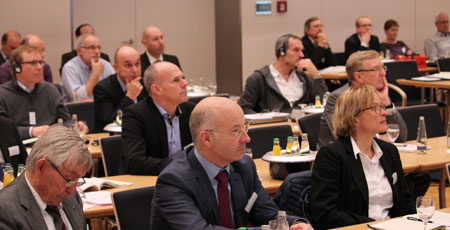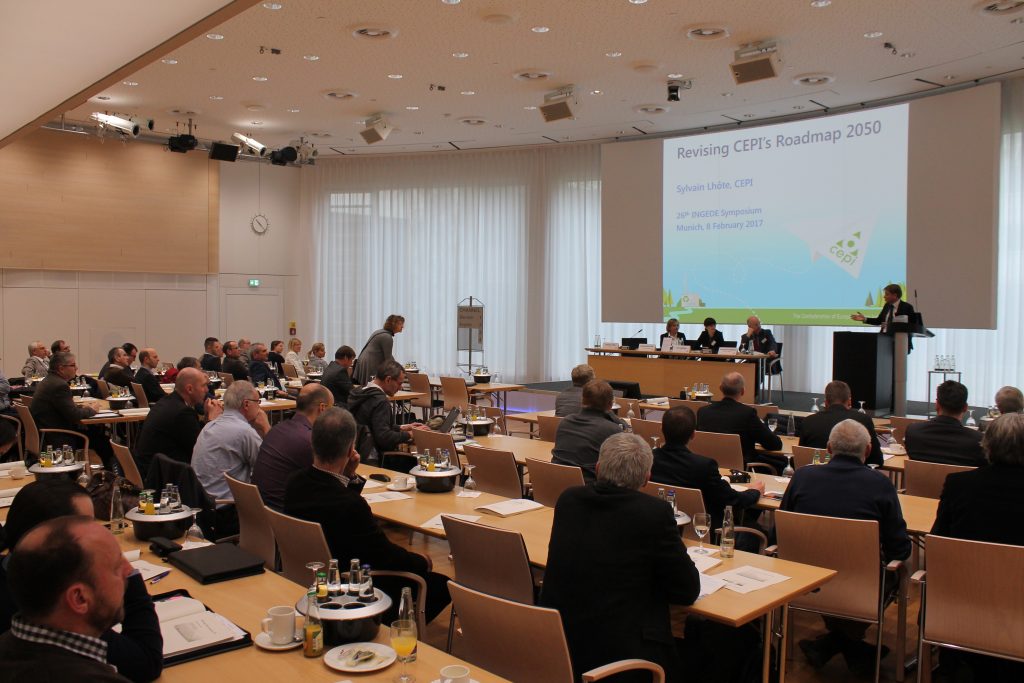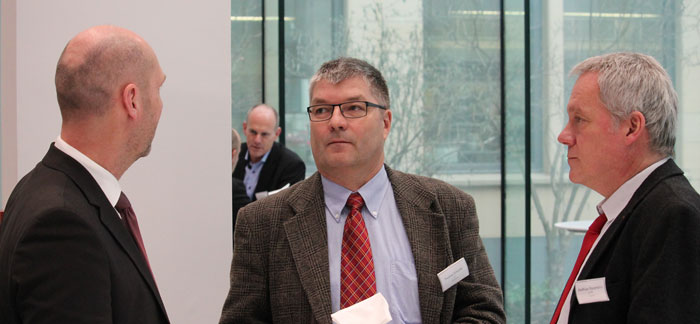Collection, Quality, and Industrial Processing of Paper for Recycling:
A Wide Range of Topics at the INGEDE Symposium on February 28, 2018, in Munich
INGEDE Symposium 2018
The challenges increase, not only for the deinkers among paper mills – it becomes more and more difficult to produce new graphic paper from paper for recycling at economically reasonable conditions. Rising prices for paper for recycling increase the costs, at the same time the availability of graphic paper is going down – people read fewer newspapers, the newspapers become thinner due to less advertising, and the paper collected for recycling contains more and more packaging. The municipalities sometimes take advantage of new legislation to discourage locally competing selective collectors who deliver especially preferred quality. Concerned about the quantity of their supplies it becomes more and more difficult for the paper mills to keep up their requirements for high quality. A helpful aspect is the increasing importance of ecolabels such as the Blue Angel or the EU Ecolabel for printed products, for which also the removability of printing inks has to be proven.

Quality is not only important for deinking grades, also the manufacturers of corrugated papers and board face the challenge to meet the rising demand at an acceptable quality, mainly for the increasing need for all kinds of packaging. A possible source for high quality paper for recycling is the fraction today known as mixed paper. How can, already by a more selective collection and sorting at the consumer, the yield be increased for the different grades, suitable for the different products? Here it is of some help to know the material flow: Where do the different fractions of paper for recycling end up, that are so valuable for the different grades to be produced?

Undeinkable Prints can Create Problems in the Recycling Process
New digital printing processes are a perennial issue at the INGEDE Symposium in Munich: Mostly the inks and therefore also their behaviour in the deinking process differ fundamentally from traditional offset and gravure inks. While dry toners (from laser printers) are generally good deinkable, some inkjet prints create problems. But here a lot has been achieved within the last years, some manufacturers have improved their processes and inks significantly. David Croll of Océ Printing Systems presented the history of inkjet printing and new, better deinkable inkjet processes at the symposium.
Some might remember that prints with liquid toner from HP Indigo are not suitable for the deinking process. Similar problems can arise from UV-curable inks – here the inks cross-link due to a polymerisation induced by UV light sources. In many cases the resulting large particles are not sufficiently separable, also because they are not as water-repellent (hydrophobic) compared to traditional offset inks. But also here some differences can be observed; at the INGEDE Symposium the reasons for the increasing prevalence of UV-cured prints and the resulting problems were discussed.

Quality of Paper for Recycling Continues to be a European Issue
Different collection rates in different European countries continue to be a challenge. In his keynote presentation, Ulrich Leberle of CEPI in Brussels explained the measures for a circular economy that the European Commission aims at together with the European paper industry.
Paper Industry 4.0:
The Digital Revolution in Papermaking?
The classical process optimisation undergoes a revolution. There are new and better answers to old questions, better than ever: Jürgen Käser, Voith’s expert for the paper industry 4.0, presented these answers. Which kind of raw material composition will reduce production costs without harming productivity? What is the relationship between the frequency of tear-off and the way the plant is being run? What application of primary energy is absolutely necessary for a certain grade? Novel mathematical modelling in real-time lead to new process dynamics, this results in highly stabilised and cost effective production processes – not to be reached by human hand so far. And the first practical applications show: Also papermaking is at the edge of a digital revolution.
